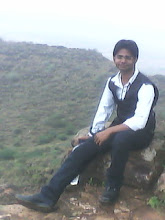Chandrashekhar Azad was born on July 23, 1906 to Sitaram Tewari and Jagrani Devi in Jhabua District. Madhya Pradesh. Chandrasekhar received his early education in a village school.
After completing his elementary schooling, he went to Varanasi for further studies in Sanskrit Vidyalaya.
There is a story how the title Azad stuck to his name forever. When he was just 14 he plunged into the freedom struggle following the massacre of Jaliawala Bagh and was arrested.
When produced before the magistrate, he told his name as 'Azad' The annoyed magistrate sentenced him to 15 cane-strokes.
With each lash he shouted: 'Bande Mataram. 'The people thereafter honoured him as ‘Azad’.
Chandrashekhar Azad, a man of free-spirit and indomitable courage, was one among the most sought after revolutionaries by British police. Azad as he was called lived and died to his will. He often used to recite:
Dushman ki goliyon ka hum samna karenge,
Azad hee rahein hain, azad hee rahenge'
early days, Azad was fascinated by non-cooperation movement of 1920-21 led by Mahatma Gandhi. But, after the withdrawal of withdrawal of the non-cooperation movement, he became a revolutionary.
Working for the Hindustan Socialist Republican Army (HSRA),
Azad was involved in the famous Kakori Conspiracy (1926).
He also attempted to blow up the Viceroy's train (1926). Further, we all know his heroics in the Assembly bomb incident, and the killing of Saunders at Lahore in 1928.
Moreover, Azad’s persona was not limited to just revolutionary heroics,
there was a humanitarian, emotional and loving side as well, of which we know little. Recently, I read about an incident involving Azad and a poor old widow.
Azad was looking for refuge after the kakori-train conspiracy. Police was after him. To dodge the police Azad took refuge at the home of an old widow. Late In the night,the old lady told Azad about her harness and that because of money her daughter was still unmarried. Feeling the plight of helpless widow,
Azad asked her to brig him to the police and get the prize-money of Rs 5,000 that Azad carried on his head. Poor widow despite an offer refused to do so and said “I wouldn't do it for Rs 5 lakh,"
Azad had to leave her home early in morning, but he did not forget to leave good sum of money for the marriage, he also left a letter in which he wrote:
"Forgive me for leaving without informing you. You did not agree to my proposal.
But now I will decide what is to be done. Please arrange the marriage of my sister as soon as possible with the money I am leaving.
I wish I could be present for the occasion. But who knows where I will be.
But Amma, what more can a brother on the run do for his sister? If my luck permits I'll meet my brother-in-law one day and bless my sister in person."
Unfortunately, the man who was ready to give his life for the prize money for the sake of a poor old widow had to die for the money awarded on his head.
When all efforts failed to arrest Azad,
the police announced a reward of Rs. 30,000.
It was a well-planned trick to announce the huge amount considering the time. And, the plan paid off. One of his own colleague betrayed Azad.
On February 27, 1931, Azad was encircled by police party in Alfred Park, Allahabad, where he went to meet an old friend. He was not the one to surrender, he fought bravely, and when a single bullet remained,the born-free Azad shot himself.




















